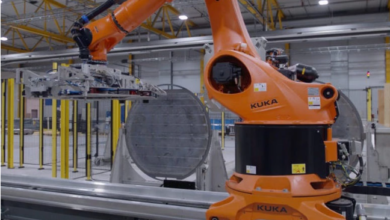Hyosung develops nylon for hydrogen tanks
Nylon is expected to gain more attention as a liner material for hydrogen containers.

Hyosung TNC has succeeded in developing and using nylon for the liner material of hydrogen vehicle fuel tanks with its own technology.
A liner is a core component required to store hydrogen in the fuel tank’s internal container and prevent leakage.
Hyosung TNC’s nylon material is superior to conventional metal and high-density polyethylene (HDPE) liner materials in terms of lightweight, gas barrier, and impact resistance.
The nylon liner material developed by Hyosung TNC is 70% lighter than metal and 50% lighter than HDPE, and gas barrier property that prevents hydrogen gas leakage is also 30% higher than metal and 50% higher than metal HDPE.
Metal liner is heavy and has a high risk of brittleness when exposed to hydrogen for a long period of time, whereas nylon liner has low hydrogen absorption and air permeability, so there is no risk of being brittleness.
HDPE liners are used as high-pressure containers at 400bar levels but cannot withstand the 700bar pressure required by typical hydrogen electric vehicles.
In addition, the hydrogen container liner must be able to withstand rapidly changing temperature fluctuation caused by frequent charging and discharging of hydrogen and the nylon liner has excellent impact resistance against to it from -40 to 85 degrees Celsius.
This development’s success is significant because it has laid the foundation for Hyosung TNC to enter the nylon liner market, which has been monopolized by foreign companies for the first time as a domestic company.
Hyosung TNC’s nylon-applied hydrogen container passed the hydrogen container international quality standard (UN/ECE R134) in June, and has been equipped with function, quality and technical perfection as a liner material. It is also planned to conduct commercial tests in cooperation with hydrogen fuel tank manufacturers and automakers.
Hyosung TNC is planning to expand the application of nylon as a liner material from tube trailers of commercial trucks to CNG and hydrogen vessels sailing the seas around the world, such as Antarctica and the Equator, by enhancing the impact and heat resistance range from -60 to 90 degrees Celsius.
Chairman Cho Hyun-Joon said, “We will contribute to the development of the future eco-friendly energy industry with the technology of materials and textiles.”
